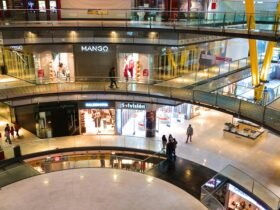The landscape of commercial construction has undergone a remarkable transformation over the past decade, with innovative approaches to workspace design fundamentally changing how businesses operate. This evolution reflects broader shifts in work culture, technological advancement, and our understanding of how physical environments impact human performance and wellbeing.
Historical Perspective: The Journey of Commercial Building Design
Traditionally, commercial buildings prioritised efficiency and cost-effectiveness over employee experience. The mid-20th century saw the rise of cubicle farms and standardised office layouts, designed to maximise occupancy while minimising costs. These environments, while practical from a space-utilisation perspective, often created sterile, impersonal workplaces that did little to inspire creativity or foster collaboration.
As research began to demonstrate the significant impact of workplace environments on productivity and employee satisfaction, commercial construction began to evolve. Studies now show that employees in well-designed workspaces report up to 20% higher productivity levels, highlighting the business case for thoughtful commercial design.
Key Trends Driving Change in Commercial Construction
Sustainability and Biophilic Design
Modern construction companies are increasingly incorporating sustainable practices and materials into their projects. Beyond the environmental benefits, research indicates that biophilic design elements—which connect occupants with nature—can reduce stress, enhance creativity, and improve air quality.
The integration of natural light, living walls, and outdoor spaces has become a hallmark of contemporary commercial construction. Studies reveal that employees in environments rich with natural light report a 15% increase in productivity and are 56% more engaged in their work.
Flexibility and Adaptability
The rigid, fixed layouts of traditional commercial spaces have given way to flexible, adaptable environments that can evolve with changing business needs. Forward-thinking construction companies now design spaces with modular elements, movable partitions, and multipurpose areas that can be reconfigured as required.
This trend has accelerated in recent years, with businesses recognising the value of spaces that can adapt to different work modes and team configurations. Research shows that 87% of employees report higher job satisfaction when given options to choose their workspace.
Technology Integration
Perhaps the most transformative trend in commercial construction has been the seamless integration of technology. Modern construction companies now build smart buildings with advanced systems for climate control, security, lighting, and communication.
These integrated technologies not only enhance the functionality of commercial spaces but also gather valuable data that can inform future design decisions. From occupancy sensors that optimise energy usage to apps that help employees navigate and utilise building features, technology has become an essential consideration in commercial construction.
Case Studies: Transformative Commercial Projects
A financial services firm in London implemented a groundbreaking approach to its workspace strategy by adopting a hybrid model featuring hot-desking and communal areas. The result was an astonishing 30% increase in employee engagement scores and a remarkable 10% growth in annual revenue.
Similarly, a tech company in Silicon Valley transformed its traditional cubicle-based office into a space designed for collaboration, with open layouts, creative lounges, and multifunctional meeting zones. This redesign led to a 12% increase in innovation-driven projects within six months and significantly improved team dynamics.
These examples illustrate how thoughtful commercial construction can deliver tangible business benefits beyond simply providing a physical space for operations.
Choosing the Right Construction Company: Impact on Project Outcomes
The selection of a construction company can significantly influence both the process and outcome of commercial projects. Experienced construction companies bring valuable insights to the planning phase, helping clients make informed decisions about materials, layouts, and systems that will maximise return on investment.
A dedicated project manager from a reputable construction company will oversee every step of the build, ensuring that delivery and installation timelines are met and budgets are adhered to5. This level of expertise and coordination is crucial for complex commercial projects, where efficient management can significantly impact completion timelines and overall costs.
Future Predictions: Commercial Space Development Through 2026 and Beyond
Looking ahead, several trends are likely to shape the future of commercial construction:
- Wellness-Focused Design: Construction companies will increasingly prioritise features that support physical and mental wellbeing, from air quality systems to spaces designed for relaxation and exercise.
- Hybrid-Ready Environments: As hybrid work models become standard, commercial spaces will evolve to support seamless transitions between in-person and remote collaboration.
- Sustainable Innovation: Advanced materials and construction techniques will enable more environmentally friendly buildings with lower operational costs.
- Community Integration: Commercial spaces will become more integrated with their surrounding communities, with mixed-use developments becoming increasingly common.
In conclusion, the evolution of commercial spaces reflects our growing understanding of how physical environments impact business performance. Modern construction companies are not simply building structures—they’re creating environments that enable businesses to thrive by supporting collaboration, creativity, and employee wellbeing. As we look to the future, the partnership between innovative businesses and experienced construction companies will continue to reshape our working environments in ways that enhance both human experience and business outcomes.











Leave a Reply